- Home
- Neal Stephenson
Twelve Tomorrows - Visionary stories of the near future inspired by today's technologies
Twelve Tomorrows - Visionary stories of the near future inspired by today's technologies Read online
Twelve Tomorrows
is published by
Technology Review, Inc.
One Main Street, 13th Floor
Cambridge, MA 02142
Tel: 617-475-8000 Fax: 617-475-8043
©2013
All rights reserved.
Editor in Chief and Publisher - Jason Pontin
Editor - David Rotman
Twelve Tomorrows Editor - Stephen Cass
Deputy Editor - Brian Bergstein
Creative Director - Eric Mongeon
Managing Editor - Timothy Maher
Copy Chief - Linda Lowenthal
Production Director - James LaBelle
Chief Digital Officer - Brent Turner
Project Manage - Jane Allen
Senior Software Engineer - Shaun Calhoun
User Interface/Digital Designer - Emily Dunkle
Senior Web Producer - Kyanna Sutton
Chief Financial Officer - Rick Crowley
Chief Operating Officer - James Coyle
Chief Strategy Officer - Kathleen Kennedy
Executive Assistant - Leila Snyder
Vice President, Consumer Marketing - Bruce Rhodes
Marketing Communications Manager - David W.M. Sweeney
Director of Advertising Sales - James Friedman
Technology Review, Inc., identifies the new technologies that matter—explaining how they work, deciphering their impact, and revealing how they’ll change our lives. Founded at the Massachusetts Institute of Technology in 1899, we are a digitally oriented global media company that publishes serious journalism in magazines and on websites and mobile devices. We also host events around the world. Technology Review, Inc., is an independent nonprofit 501(c)(3) corporation wholly owned by MIT; the views expressed in our publications and at our events are not always shared by the Institute.
Contributors
British author Brian W. Aldiss is a Grand Master of science fiction, with a publishing career that stretches back to the 1950s; his 1969 short story “Super Toys Last All Summer Long” was the basis for the movie A.I. He has won or been a finalist for every major award in literary science fiction multiple times.
With a background in physics and optics, including time spent at the Jet Propulsion Lab, San Diego–based David Brin has made a career of predicting the future with a blend of fiction and nonfiction work. His second book, Startide Rising, won the 1984 Nebula, Hugo, and Locus Awards, and he has won or been a finalist for many of these awards since.
Australian author Greg Egan’s first science fiction story was published in 1983. His stories often hinge on exploiting some element of physics. His novel Permutation City won the 1995 John W. Campbell Memorial Award, and in 1999 Oceanic won the Hugo and Locus Awards.
Currently living in Germany, Nancy Fulda has a research background in computer science and has been publishing science fiction since 2006. She was a nominee in 2012 for a Hugo for her short story “Movement.”
Tennessee-based Kathleen Ann Goonan debuted in 1994 with her novel Queen City Jazz, which firmly established the focus on the intersection between nanotechology and biotechnology that marks much of her work. Her alternate-history novel In War Times won the 2008 John W. Campbell Memorial Award.
Seattle-based Nancy Kress first started publishing in the 1970s, initially in the fantasy genre but then moving into science fiction. She has won four Nebula Awards (including the 2008 award for best novella for “Fountain of Age”) and two Hugo Awards (including the 2009 award for best novella for “The Erdman Nexus”). Her novel Probability Space won the 2003 John W. Campbell Award. Her work often focuses on the impact of technology on the lives of ordinary people.
London-based Paul McAuley is a botanist by training. His debut novel, Four Hundred Billion Stars, won the Philip K. Dick Award in 1998; his 1995 novel Fairyland won the Arthur C. Clarke and the John W. Campbell Memorial Awards.
Living in Belfast, Ian McDonald first came to prominence in 1988 with Desolation Road, a novel that married magic realism and science fiction. More recently, his work has focused on exploring the near future in developing nations: set in India, his 2004 River of Gods won a British Science Fiction Association Award.
Richard Powers (1921–1995) was an American artist and illustrator whose work appeared on the covers of over 1,200 novels. Drawing from Surrealism and Abstract Expressionism, his distinctive style emphasized psychological tension over melodramatic thrills. He was inducted into the Science Fiction Hall of Fame in 2008.
Hailing from Leeds, England, Justina Robson was a finalist for the 2000 Arthur C. Clarke Award and British Science Fiction Association Best Novel Award for her first novel, Silver Screen. A theme in her writing is the nature of mind, real and artificial.
Based in Huntsville, Alabama, Cheryl Rydbom is a missile defense software engineer who turned to fiction writing during a leave of absence to raise twins. She was first published in 2011 with her short story “The Jenny.”
Currently living in Massachusetts, Allen M. Steele has been publishing science fiction since 1988. He won his first Hugo Award for his 1995 novella “The Death of Captain Future.” More recently, his 2010 novelette “The Emperor of Mars” won another Hugo. Steele is a member of the Board of Advisors for the Space Frontier Foundation.
Neal Stephenson has had a string of best-selling novels, including Snow Crash, The Diamond Age, Crytonomicon, and Reamde. His work often merges the philosophical and the computational.
Jumping careers from marine biologist to author, Canadian Peter Watts published his first science fiction story in 1990 and his first novel, Starfish, in 1999. He is noted for his somewhat bleak story lines leavened with a dry wit. In 2010 Watts’s “The Island” won the 2010 Hugo Award for Best Novelette.
Preface
Welcome to Twelve Tomorrows, the second science fiction anthology from the editors of MIT Technology Review. As before, our focus is on tales of the near future, inspired by the kinds of emerging breakthroughs covered by MIT Technology Review and written by a cadre of talented writers from around the world.
We’re also bringing you an in-depth interview with one of the most creative science fiction authors working today, Neal Stephenson. He talked with MIT Technology Review’s editor in chief, Jason Pontin, about his work and the role that science fiction plays in shaping the future.
The goal of Twelve Tomorrows is to provoke thought about the future in ways that journalism, however perceptive, can’t. When it comes to looking more than a few years out, the only thing we can guarantee about the future is that it will bring ever more powerful advances. How will we use this power? Imagination must fill in the blanks in our projections and suggest some of the unexpected twists and turns that inevitably mark how technologies manifest themselves.
So we bring you a dozen glimpses of tomorrow from some of the best in the business, looking at how developments in biofuels, space travel, communications, genetic engineering, materials, computing, and more could play out once they leave the laboratory. Which futures would you like to live in, and which would you hope to avoid? Let us know at
www.technologyreview.com/twelvetomorrows. —Stephen Cass, editor
Q+A
Neal Stephenson
Neal Stephenson is arguably the most influential science fiction writer working today. Acclaimed by science fiction critics, Stephenson’s books have also enjoyed mainstream popularity, several making t
he New York Times list of best-sellers. His work is noted for its originality, ambition, and vivid exploration of emerging technologies.
Stephenson found breakout success with his third novel, 1992’s Snow Crash, which was set simultaneously in a balkanized near-future America and in an online virtual reality called the Metaverse. The novel combined computing, neuroscience, and Sumerian mythology within a rapidly moving plot. Stephenson’s timing was impeccable. Just as the Internet was surging into the mainstream, Snow Crash (along with William Gibson’s earlier Neuromancer) provided a shared vision and vocabulary to the scattered tribes of young programmers, engineers, and designers who were hastily constructing a new era of global telecommunication. Among other contributions to online culture, Snow Crash helped establish the word avatar as the term of art for a virtual persona controlled by a human being. For a generation, every major experiment in online virtual-world building was inevitably subjected to a comparison with the Metaverse.
A 1995 semi-sequel, The Diamond Age: Or, A Young Lady’s Illustrated Primer, adopted molecular nanotechnology as its central subject. Displaying deeper emotional depth than its predecessor, The Diamond Age presented an age of miracles through the eyes of an impoverished girl. The novel is linked to Snow Crash through the recurrence of a single character, YT, a literary device Stephenson would return to in linking his Cryptonomicon (1999) to the three-volume Baroque Cycle (2003–2004) via the enigmatic character of Enoch Root.
Snow Crash, The Diamond Age, Cryptonomicon, and The Baroque Cycle showcase Stephenson’s fascination with the nature of computation, which spilled over into a 1999 extended nonfiction essay called In the Beginning … Was the Command Line. Initially appearing online, and later published as a short book, In the Beginning … meditated upon the design of the operating systems of the day, transforming arcane debates among programmers into a breezy analysis of turn-of-the-century consumer computing. Similarly, in Cryptonomicon, Stephenson painlessly unpacked the key principles of digital cryptography in a narrative that jumped between two temporal settings: the Allies’ struggle to break Axis codes during World War II, and the so-called crypto wars of the 1990s, when the U.S. government reacted badly to the democratization of powerful cryptographic software.
In The Baroque Cycle, this fascination took a philosophical turn. In a significant departure from Stephenson’s earlier work, it takes place not in a present-day or near-future milieu, but in a meticulously detailed 17th-century world. As befits its name, The Baroque Cycle has an incredibly intricate plot. Spanning the globe, it traces the flowering of the scientific revolution, and some idea of its complexity can gleaned from the fact that a detailed depiction of Leibniz’s and Newton’s independent creation of calculus, and their subsequent rivalry, makes up just one subplot.
Stephenson went even further afield with 2008’s Anathem, leaving Earth to imagine the world of Arbre, a planet similar to and different from our own in puzzling ways. Like The Baroque Cycle, Anathem is a philosophical work, although one more obviously wrapped in the trappings of science fiction than its predecessor. A mysterious object appears in the skies above Arbre, and the planet’s society turns to a group of thinkers who choose to live in monastic “concents,” isolated from the distractions of the outside world. Dealing with the crisis results in both a bildungsroman and a high-stakes reification of the age-old debate between formalists and realists.
Following Anathem, Stephenson returned to the past with a cooperative, multimedia-enhanced work of serial fiction, featuring a group of medieval warriors standing against the armies of the Mongol invasion. Written with Greg Bear and others, The Mongoliad first appeared in 2010 as installments intended to be read in a Web browser or smartphone application. (A re-edited version, which has been declared to be the definitive text, was released in a conventional format in 2012.)
For Stephenson’s latest novel, Reamde (2011), he returned to the world of online communities, but rather than focusing on the all-encompassing Metaverse, Stephenson zeroed in on a massively multiplayer online game. Reamde is typically complex, weaving together multiple storylines and settings. The book boasts six or seven characters competing for the title of protagonist while facing off against terrorists, Russian mobsters, and aggrieved gamers in locations ranging from Xiamen, China, to the backwoods of Idaho.
Stephenson’s current projects include Project Hieroglyph, an online publication intended to encourage fresh science fiction that serves as inspiration for engineers and scientists trying to build a better future.
In 2012 Jason Pontin, the editor in chief of MIT Technology Review, and Thomas Levenson, the director of MIT’s graduate program in science writing, invited Stephenson to the MIT campus to discuss his work. Interviewed by Pontin in front of an audience of the Institute’s students and faculty, Stephenson talked about the value of science fiction, its impact on technological culture, and the evolution of his own work—as well as the proper way to hold a sword and why better insurance may be the key to exploration of the solar system. —Stephen Cass
The following interview has been edited and condensed for clarity.
Q:What is science fiction for?
A:I’m a bit hesitant to assign instrumentality to it, but according to technologists, scientists, and engineers, it seems to have played a role in partly inspiring people to go into those fields and, to some degree, shaping what they did once they got into a position to do something. So if it’s got a purpose, it seems to be that.
Q:Of late, you’ve spoken of optimism a great deal. Optimism is a moral duty, according to the philosopher Karl Popper—do you mean there’s a similar categorical imperative for science fiction?
A:Probably the least productive behavior I could engage in would be telling all the world’s science fiction writers what they should and shouldn’t be doing. So I’m going to refrain from that. But I do think that there is a self-fulfilling cycle that we could get trapped in: if every depiction of the future is grim and shows a world that’s been destroyed by environmental calamity and war and other terrible events, then it doesn’t create much of an incentive to work towards building the future.
Q:Are you optimistic or pessimistic about the effects of disruptive technologies in the next ten to twenty years?
A:I’m a pessimist trying to turn himself into an optimist.
Q:You’ve expressed dismay about our inability to get big things done, such as going to the moon.
A:I would settle for being able to get into space again.
Q:How did we lose our confidence and our competence?
A:Slowly. Slowly enough that I didn’t notice it, even though I’m the kind of person who ought to notice. If we just look at space, I can look back now to the early days of the space shuttle, which was hyped as being a tremendous advance for the manned space launch program. I felt a certain kind of doubt that this was really what we wanted, but I wanted to believe the hype, and so I did. Then, twenty years later, it’s possible to look back on the program and say that it wasn’t what we ought to have been doing. But it took a long time to figure that out.
Q:Perhaps the premise is mistaken. Maybe we’ve been focusing on innovations that are more abstract and virtual.
A:We’ve been focusing on the Internet, and that’s something that needed to happen. But what I’m hoping is that when we look back on this era 100 years from now, we’ll say, “It was a very actively inventing and creating society. And then the Internet happened and everything got put on hold for a generation while we absorbed and figured out what to do with it. Then we got going again and got caught up on some of the things we failed to do while we were Facebooking.”
Q:You have a project called Project Hieroglyph. Is it intended to inspire us with optimistic visions of things getting done?
A:It’s kind of an experiment, almost something I’m doing on a dare. I was at a conference called Future Tense, in D.C. As far as I could make out, the theme of the conference was “Oh my God, people are out there inventing new things�
��what are we going to do to regulate them?” Which, on one level, I understand: all of my knee-jerk reflexes are those of a child of the environmental movement. On the other hand, this was not long after the Deepwater Horizon accident, and I’d been thinking, “Maybe we need something new.” I decided to be the fly in the ointment. I talked about how we should be focusing on doing some new innovations. And not on the level of, say, writing apps, but on the level of restructuring our energy system so we don’t have to go fight wars in places like Iraq.
That led to a conversation about what, if any, utility science fiction had, which is what your earlier question was about. There are two theories. One is the inspirational theory that young people read science fiction and decide to become scientists and engineers. I think that’s true, but the other theory is about a less obvious utility, that science fiction can provide a coherent picture of an alternate reality in which some innovation happened. Not just the technical innovation itself, but the social context and the economic context that causes that innovation to make sense. It can be sort of like an invisible magnetic field that gets iron filings to line up. In big engineering organizations, you’ve got all these people working on small pieces of a bigger problem, and there’s an enormous amount of communication that has to take place to keep them all working in a coordinated fashion. That communication is tedious and expensive, but if everybody’s got the same picture in their heads, maybe you don’t have to communicate as much.

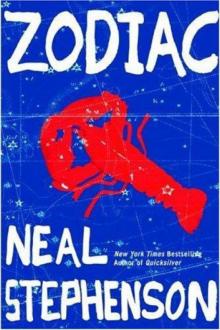 Zodiac: The Eco-Thriller
Zodiac: The Eco-Thriller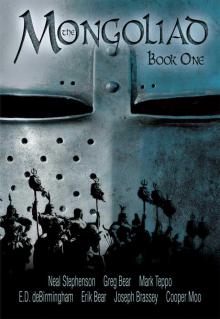 The Mongoliad: Book One
The Mongoliad: Book One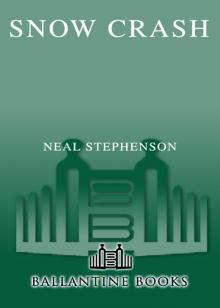 Snow Crash
Snow Crash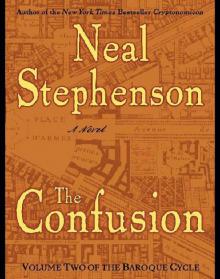 The Confusion: Volume Two of the Baroque Cycle
The Confusion: Volume Two of the Baroque Cycle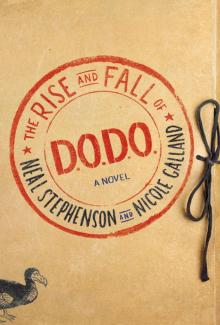 The Rise and Fall of D.O.D.O.
The Rise and Fall of D.O.D.O.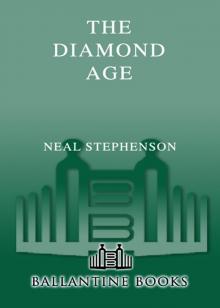 The Diamond Age: Or, a Young Lady's Illustrated Primer
The Diamond Age: Or, a Young Lady's Illustrated Primer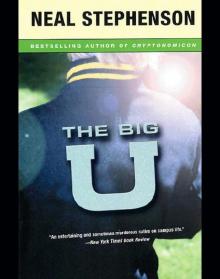 The Big U
The Big U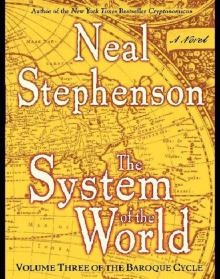 The System of the World: Volume Three of the Baroque Cycle
The System of the World: Volume Three of the Baroque Cycle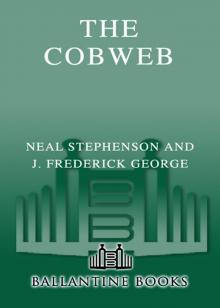 The Cobweb
The Cobweb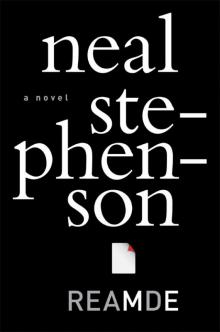 Reamde
Reamde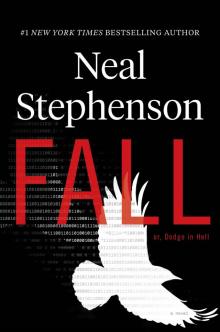 Fall; or, Dodge in Hell
Fall; or, Dodge in Hell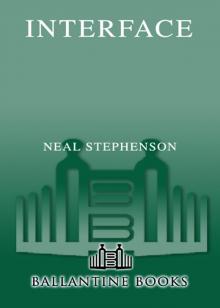 Interface
Interface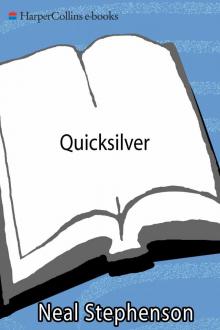 Quicksilver
Quicksilver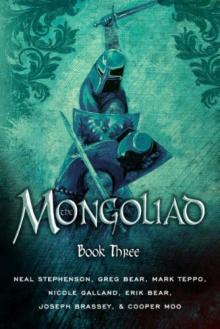 The Mongoliad: Book Three
The Mongoliad: Book Three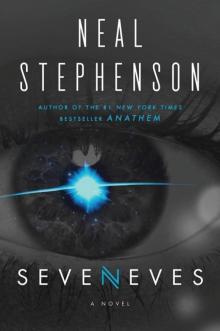 Seveneves
Seveneves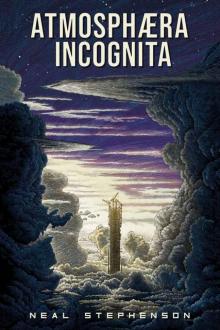 Atmosphæra Incognita
Atmosphæra Incognita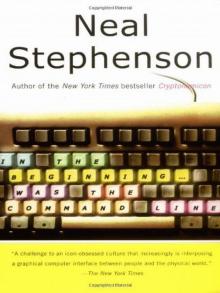 In the Beginning...Was the Command Line
In the Beginning...Was the Command Line Anathem
Anathem The Rise and Fall of D.O.D.O.: A Novel
The Rise and Fall of D.O.D.O.: A Novel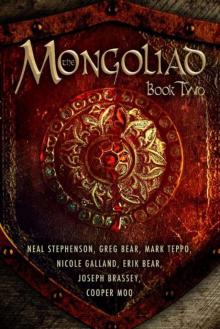 The Mongoliad: Book Two
The Mongoliad: Book Two Diamond Age or a Young Lady's Illustrated Primer
Diamond Age or a Young Lady's Illustrated Primer THE System OF THE WORLD
THE System OF THE WORLD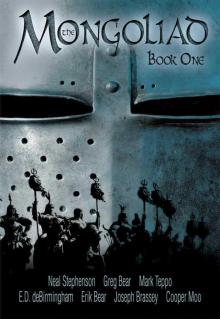 The Mongoliad: Book One tfs-1
The Mongoliad: Book One tfs-1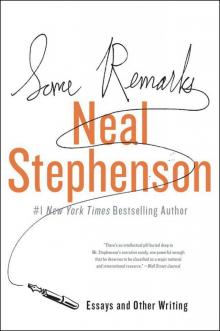 Some Remarks: Essays and Other Writing
Some Remarks: Essays and Other Writing Zodiac
Zodiac Spew
Spew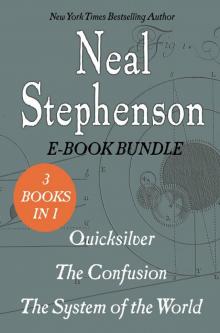 The Baroque Cycle: Quicksilver, the Confusion, and the System of the World
The Baroque Cycle: Quicksilver, the Confusion, and the System of the World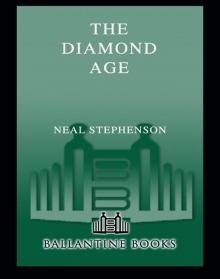 The Diamond Age
The Diamond Age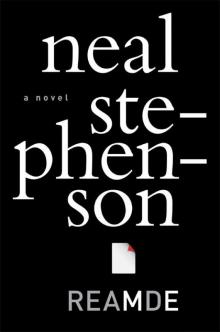 Reamde: A Novel
Reamde: A Novel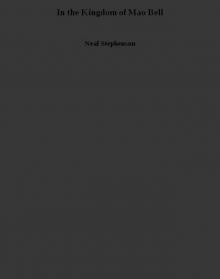 In the Kingdom of Mao Bell
In the Kingdom of Mao Bell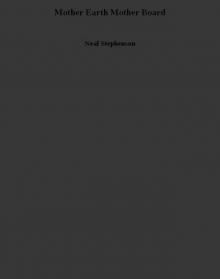 Mother Earth Mother Board
Mother Earth Mother Board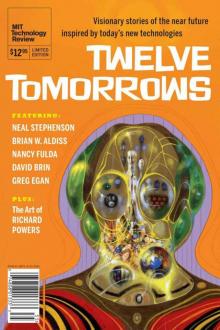 Twelve Tomorrows - Visionary stories of the near future inspired by today's technologies
Twelve Tomorrows - Visionary stories of the near future inspired by today's technologies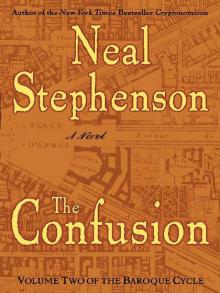 The Confusion
The Confusion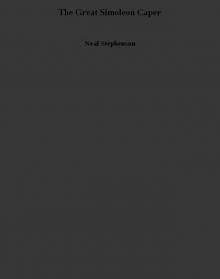 The Great Simoleon Caper
The Great Simoleon Caper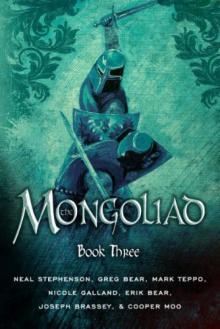 The Mongoliad: Book Three tfs-3
The Mongoliad: Book Three tfs-3